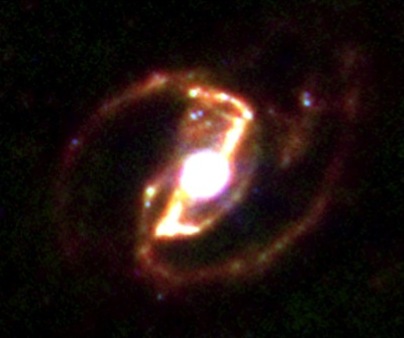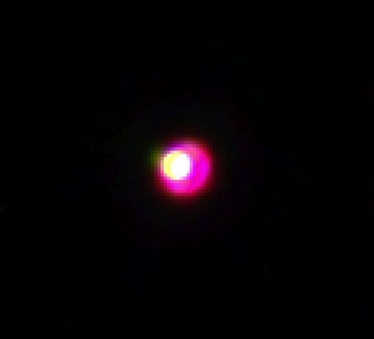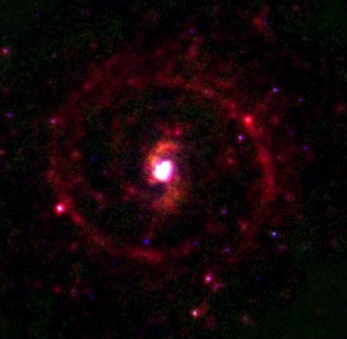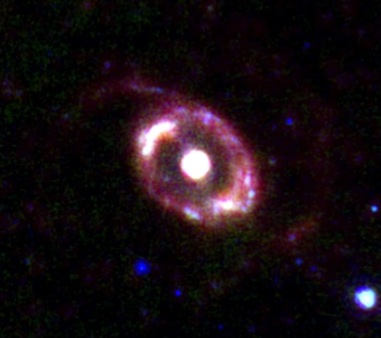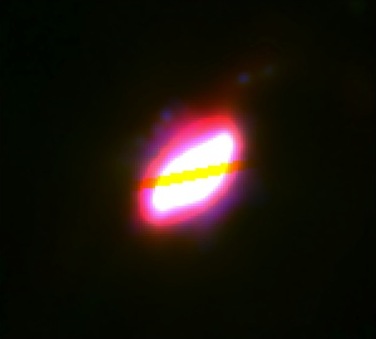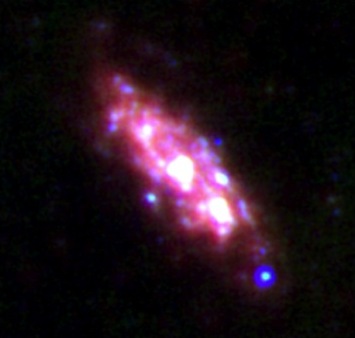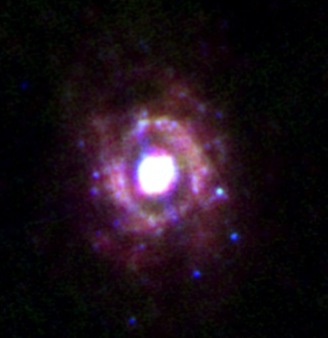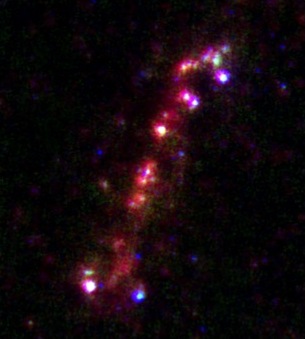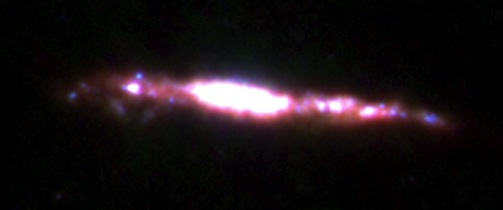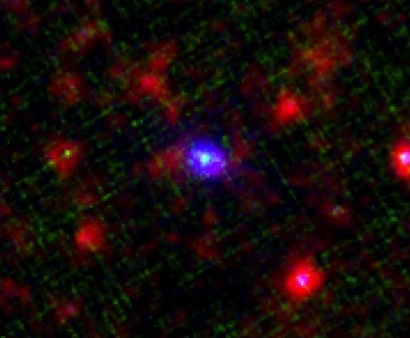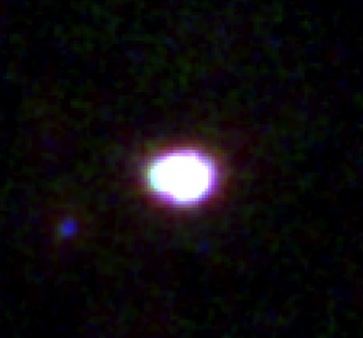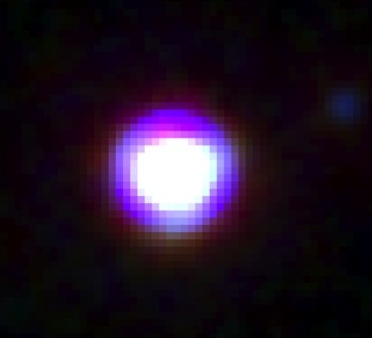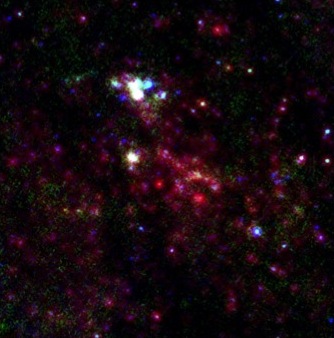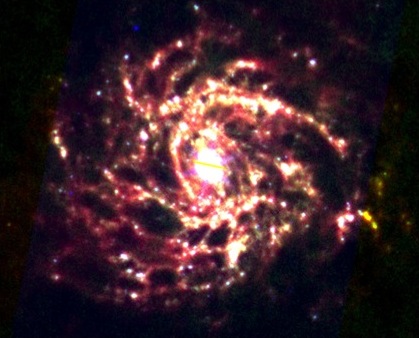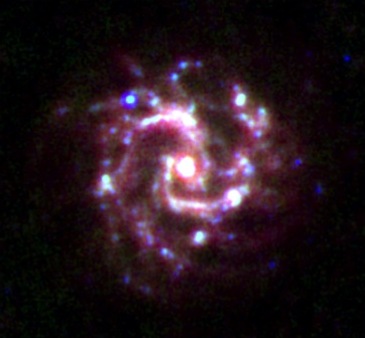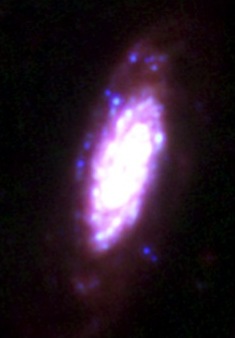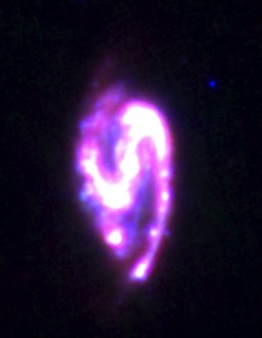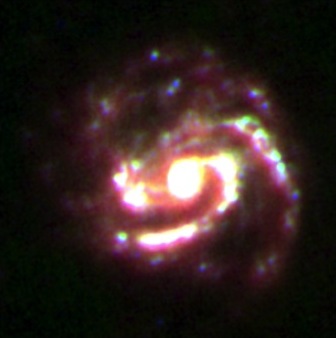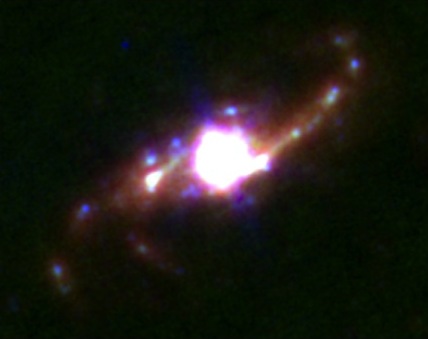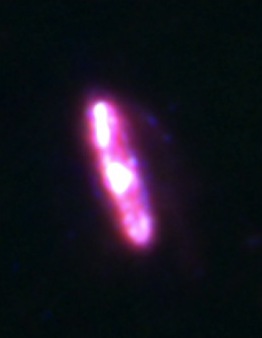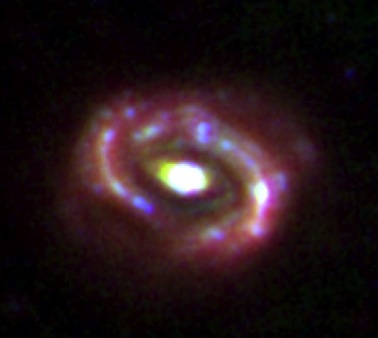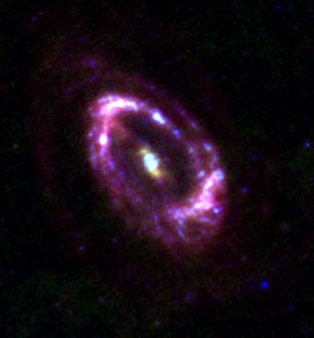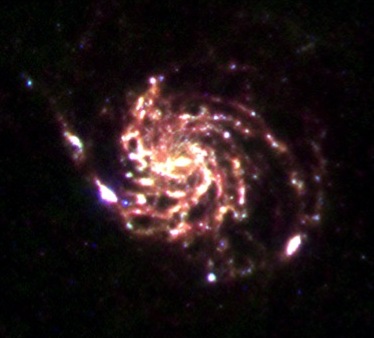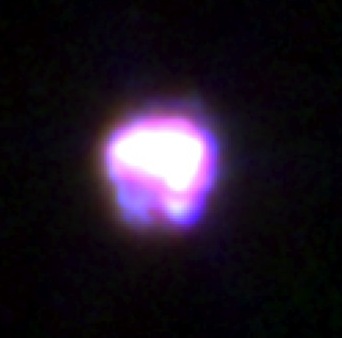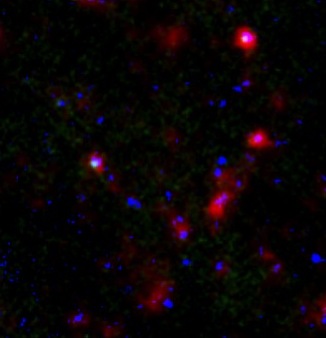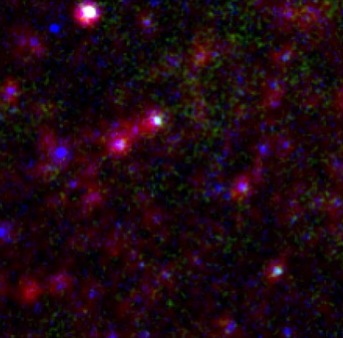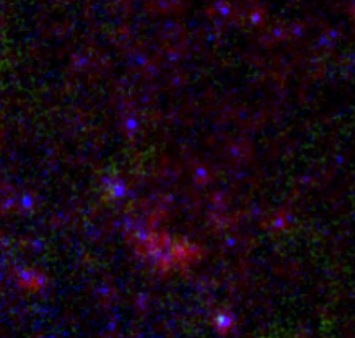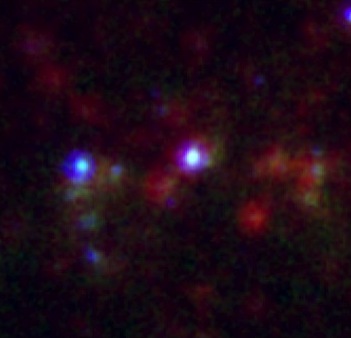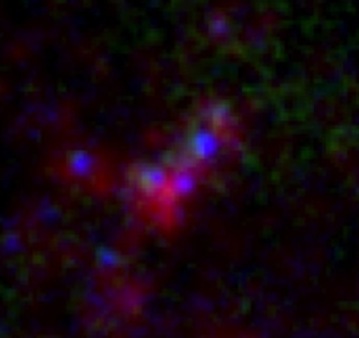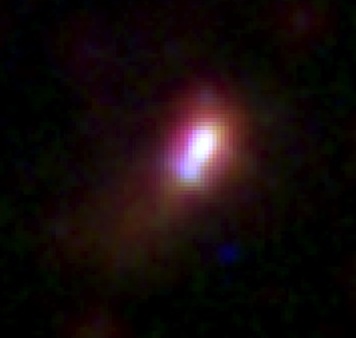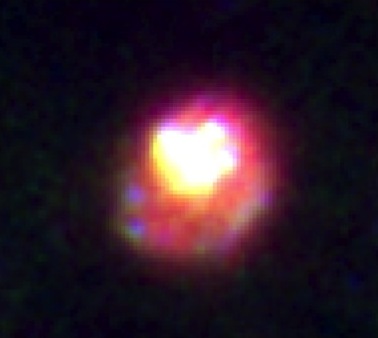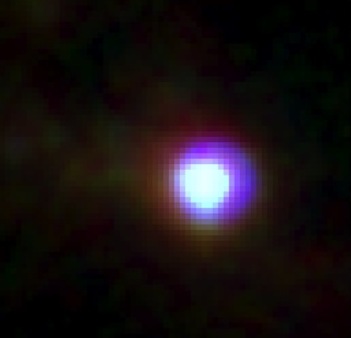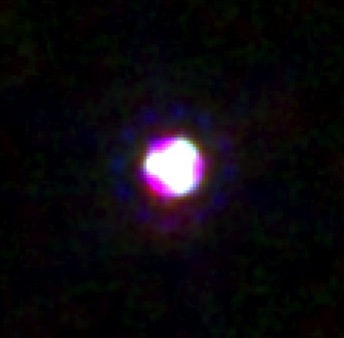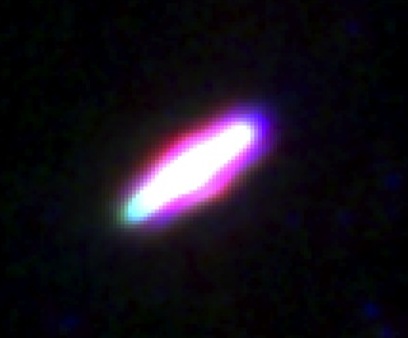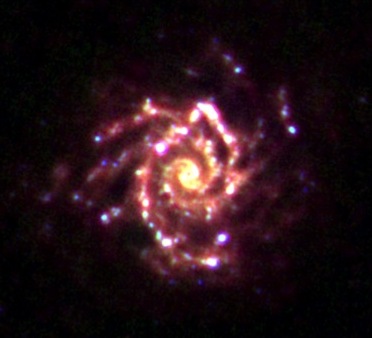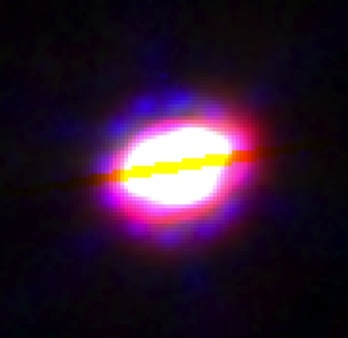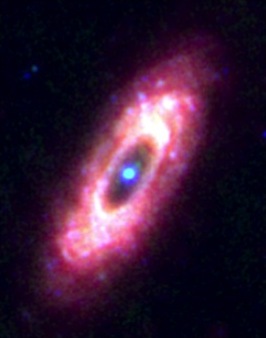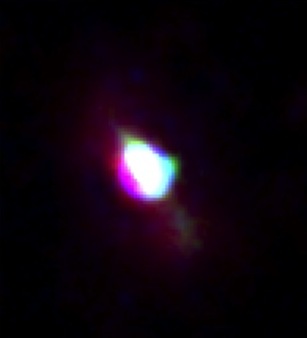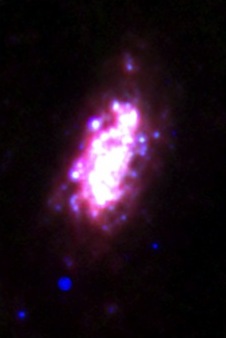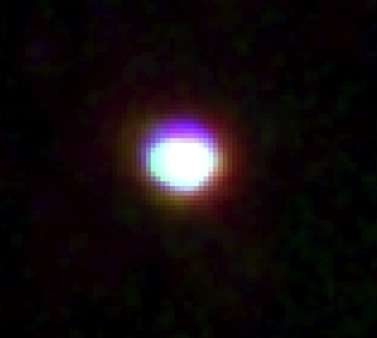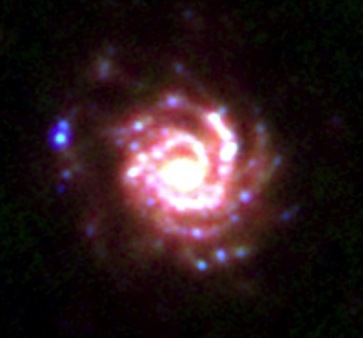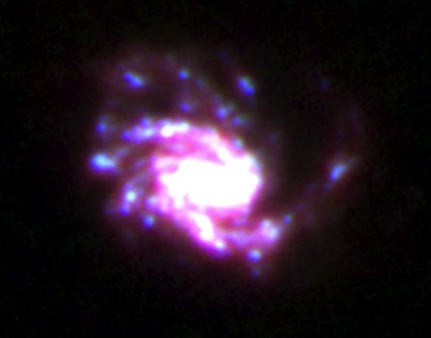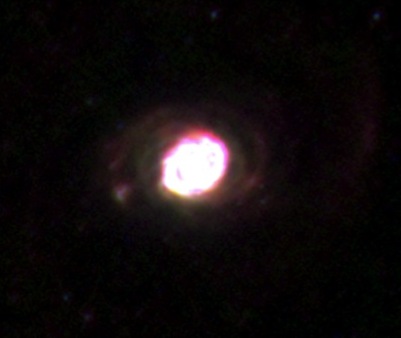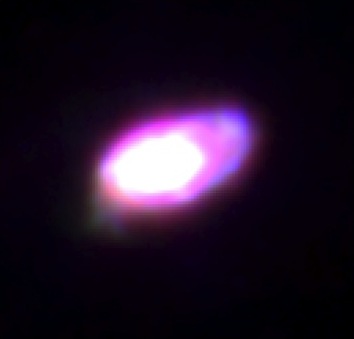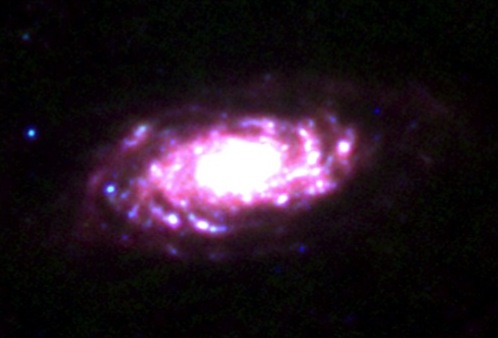


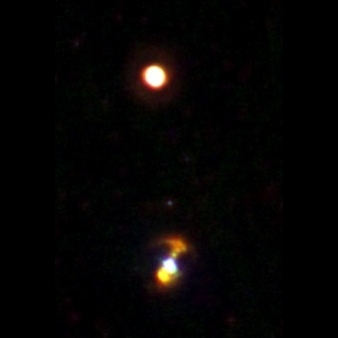
Fornax A
Type: Intermediate Spiral Lenticular Galaxy
Morphology: SAB0
Distance: 68.5 million light years
Size: 239 thousand light years
Size: 9 billion Solar masses
RA: 3h 22m 43.9s Dec: -37o 9' 10.00''
Constellation: Fornax
Other names: NGC 1316
Fornax A is the lower of the two galaxies seen here, and appears to be interacting with the galaxy seen above it. The cause of the distrubted shape of Fornax A, however, is thought to be a merger with another galaxy several billion years ago. Fornax A is also one of the brightest sources of radio waves in the sky, caused by an active black hole at its centre.
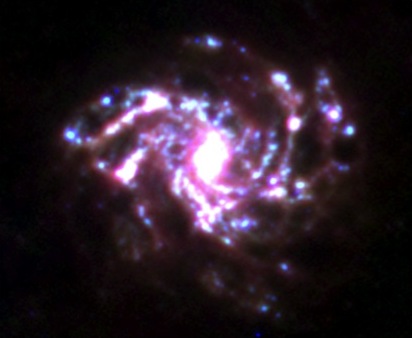
Fireworks Galaxy
Type: Intermediate Spiral Galaxy
Morphology: SABcd
Distance: 22.2 million light years
Size: 74 thousand light years
Size: 9 billion Solar masses
RA: 20h 34m 52.7s Dec: 60o 9' 14.00''
Constellation: Cepheus
Other names: NGC 6946, Arp 29, and Caldwell 12
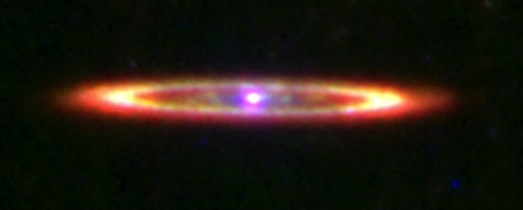
M104
Type: Spiral Galaxy
Morphology: SAa
Distance: 29.6 million light years
Size: 74 thousand light years
Size: 114 billion Solar masses
RA: 12h 39m 59.3s Dec: -11o 37' 23.00''
Constellation: Virgo
Other names: NGC 4594, Sombrero
Called the 'Sombrero Galaxy' due the ring of dust around it, which gives it the look of a sombrero hat in optical images. In infrared light it is this dust which shines the brightest, creating the bright ring of material.
Elliptical Galaxies
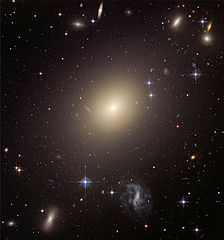
An elliptical galaxy
Elliptical galaxies don't show any spiral structure, but have a smooth ellipsoidal shape, appeararing as large spherical or elliptical balls of stars. They often contain very old stars and very little gas and dust.
The classifications of elliptical galaxies range from "E0", which means spherical, to "E7", which is very elongated.
Spiral Galaxies

A spiral galaxy
Spiral galaxies have a central bulge of stars surrounded by a disk that contains "arms" which form a spiral structure, serparated by lanes of dust.
The classifications of spiral galaxies range from "Sa" (bright central bulge, and smooth, tightly-wound spiral arms) to "Sd" (faint central bulge, and fragmented, loosly-wourd spiral arms. Galaxies in between two categories have both letters, e.g. "Sbc".
Galaxies that have a disk but no apparent spiral structure are called "Lenticular galaxies", and are classified as "S0". Galaxies with disrupted spiral structure are called "magellanic spirals" and have a "m" added (e.g. "Sdm").
Barred Spiral Galaxies
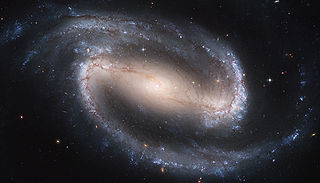
A barred spiral galaxy
Barred spiral galaxies are spiral galaxies with a straight bar across the middle of the galaxy.
Classifications are similar to non-barred spiral galaxies, ranging from "SBa" (tightly-wound spirals and bright central bulge), to "SBd" (loosely-wound galaxy with faint central bulge).
Intermediate Spiral Galaxies

An intermediate spiral galaxy
Intermediate spiral galaxies lie between the barred and non-barred spiral galaxies, i.e. they have a small or faint bar
Classifications are similar to barred non-barred spiral galaxies, ranging from "SABa" (tightly-wound spirals and bright central bulge), to "SABd" (loosely-wound galaxy with faint central bulge).
Irregular Galaxies

An irregular galaxy
Irregular galaxies have very little defined structure, normally due to being too small or being pulled by the greavity of another nearby galaxy.
Irregular galaxies with no structure are called "Im", while those with some structure are called "Sm" (some spiral structure), "SBm" (some barred-spiral structure) etc. Those with peculiar have a "p" added to the end.
Hubble Tuning Fork
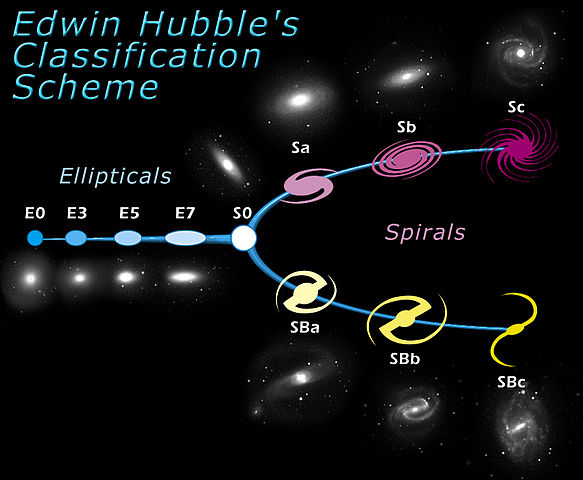
The Hubble Sequence
Galaxies are grouped into several main types, classified by their "morphology", i.e. their shape and structure. The scheme was first devised by Edwin Hubble and later expanded by Gerard de Vacouleurs and Allan Sandage.
The broad classes of galaxies, such as "elliptical" and "spiral", are split into sub-classes.
Click on the individual galaxies to find out more about them.
More information about galaxy morphological classifications.


